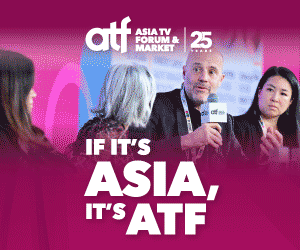Smita Singh was doing a screenwriting course at the Film and Technical Institute of India (FTII) in Pune. The script written at the end of the course is a writer’s calling card, and Chaitanya Hegde, partner at India-based talent agency Tulsea, came calling. He liked Singh’s love story, Raat Akeli Hai (The night is alone), and signed her on in 2014. Two years later, Singh became one of the three writers, along with Vasant Nath and Varun Grover, on Sacred Games, Netflix’s first original commissioned out of India.
The three are among the 110 writer/directors of a total roster of 200 that Tulsea, now India’s largest agency for writers, represents. Along with Matrix, Kwan, Bling, Spice and others, the agency brings much-needed method to India’s entertainment/talent ecosystem with writers’ rooms, brand and endorsement deals and rate benchmarks.
About time. At the production end, studios have taken charge and at the retail end multiplex chains. But at any industry gathering, talk inevitably turns towards talent – or the shortage of it. In the last 10 years alone, the Indian film industry has grown by over 60% and TV by 300%. As a result, “the demand for (talent) has increased 200-300 times, so you need a larger system to build for that,” says Rana Daggubati, Kwan South’s managing partner.
Tulsea, Kwan, Matrix et al are working towards that in an array of ways, including scouting and signing new talent, finding suitable projects and even, depending on the agency, putting together funding.
Kwan represents 150 actors, sports stars and celebrities such Ranbir Kapoor and Deepika Padukone. It calls itself a “marketplace for popular culture” and its agents take on mid-size celebrities who can be leveraged beyond an area, niche or genre. For instance, when Kwan took on Pritam, the composer for super hits such as Dangal (2016) and Yeh Jawaani hai Deewani (2013), one of the founders, Anirban Das Blah, was sceptical. Was he scalable? Vijay Subramaniam, co-founder and the man who was making the call, i...
Smita Singh was doing a screenwriting course at the Film and Technical Institute of India (FTII) in Pune. The script written at the end of the course is a writer’s calling card, and Chaitanya Hegde, partner at India-based talent agency Tulsea, came calling. He liked Singh’s love story, Raat Akeli Hai (The night is alone), and signed her on in 2014. Two years later, Singh became one of the three writers, along with Vasant Nath and Varun Grover, on Sacred Games, Netflix’s first original commissioned out of India.
The three are among the 110 writer/directors of a total roster of 200 that Tulsea, now India’s largest agency for writers, represents. Along with Matrix, Kwan, Bling, Spice and others, the agency brings much-needed method to India’s entertainment/talent ecosystem with writers’ rooms, brand and endorsement deals and rate benchmarks.
About time. At the production end, studios have taken charge and at the retail end multiplex chains. But at any industry gathering, talk inevitably turns towards talent – or the shortage of it. In the last 10 years alone, the Indian film industry has grown by over 60% and TV by 300%. As a result, “the demand for (talent) has increased 200-300 times, so you need a larger system to build for that,” says Rana Daggubati, Kwan South’s managing partner.
Tulsea, Kwan, Matrix et al are working towards that in an array of ways, including scouting and signing new talent, finding suitable projects and even, depending on the agency, putting together funding.
Kwan represents 150 actors, sports stars and celebrities such Ranbir Kapoor and Deepika Padukone. It calls itself a “marketplace for popular culture” and its agents take on mid-size celebrities who can be leveraged beyond an area, niche or genre. For instance, when Kwan took on Pritam, the composer for super hits such as Dangal (2016) and Yeh Jawaani hai Deewani (2013), one of the founders, Anirban Das Blah, was sceptical. Was he scalable? Vijay Subramaniam, co-founder and the man who was making the call, insisted that earnings would rise – and they did. By about 20 times.
Pritam credits performance to Kwan’s 360-degree approach, gobbledegook to him back in 2014. Now he realises it means exploring and leveraging his creative prowess in various ways – like singing with Gospel singers on an American tour. In 2015 Kwan set up Studio J.A.M.8 to nurture musical talent under Pirtam.
Similar stories abound. Sudip Sharma was a struggling writer until NH10 (2015) and Udta Punjab (2016), the films he is now known for. Sharma says working without an agent was “like shooting in the dark”.
The blooming of talent agencies however is not something studios in India have necessarily welcomed. It took Tulsea eight years to convince studios it could deliver. Even now, there is a “total unwillingness to say the talent (on a show or film) is from Tulsea,” says Tulsea partner, Datta Dave.
This remains the biggest challenge to professionalising this part of the value chain. “Some of the producers get very upset when I say ‘Tulsea will talk to you’. They say it is not nice. If you have agents it sends the wrong message to the producers,” says Gazal Dhaliwal, writer on films such as Lipstick Under My Burkha (2016) and Qarib Qarib Single (2017).
Others have no such qualms. Sunil Lulla, Balaji Telefilms’ group chief executive, reckons “a management service makes sure of the dates, arranges the appearance. They do whatever is required to make the product happen”.
However perish the thought – for now – of Indian versions of U.S.-style William Morris Endeavour-IMG or Creative Artists Agency. “William Morris or CAA is in a developed economy where all factors are stable – studio power and internal democracy is ingrained. We are still evolving. Our star system is feudal,” says Spice founder, Prabhat Choudhary. The agency handles branding for Shah Rukh Khan, Aamir Khan and Mahesh Babu, among others.
Like it or not though, talent agencies are here to stay. More than 15 years back, Indian studio bosses would have laughed at the idea of paying a talent agency to source a writer or director. Now they do. – Vanita Kohli-Khandekar
Published in Issue Seven of ContentAsia's in-print + online 2018 (December 2018)



















